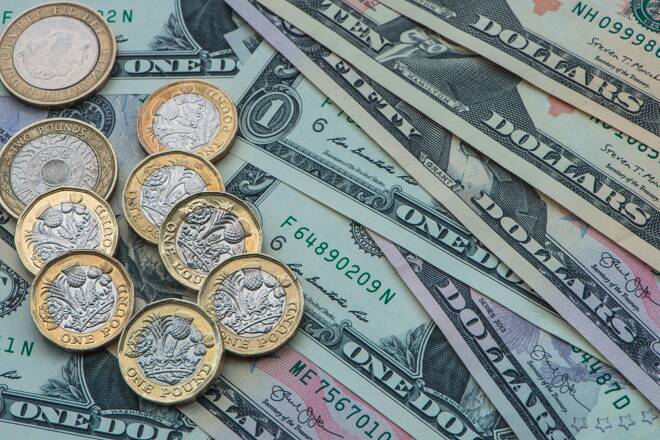Advertisement
Advertisement
GBP to USD Forecast: British Pound Wilts Under Pressure
By:
The GBP to USD outlook remains dim, with Sterling feeling the pressure from a dovish Bank of England and contracted services sector.
Highlights
- GBP/USD sees another dip; Monday’s session closes at $1.22112 after a peak of $1.22500.
- Bank of England’s dovish stance rattles Sterling, adding to its consecutive session losses.
- US consumer confidence is soon under the microscope; a sharp decline may affect Fed rate decisions.
Overview of the Monday Session
On Monday, the GBP to USD pair fell by 0.19%. Following a 0.48% loss on Friday, the GBP/USD ended the day at $1.22112. The GBP/USD struck a high of $1.22500 before falling to a low of $1.21936.
Dovish Bank of England Outlook Leaves the Pound in the Cold
The GBP/USD pair extended the losing streak to four sessions on Monday. Market sentiment toward Bank of England monetary policy and dovish economic outlook leaves the GBP/USD under pressure.
The dovish Bank of England monetary policy decision continues to resonate this week. In September, the services sector contracted more markedly, fueling fears of a BoE-fueled recession.
Notable, the services sector accounts for over 75% of UK GDP and more than 80% of employment. The more marked contraction signals a dovish UK labor market that would further impact the UK economy. Household consumption contributes over 60% to GDP.
The deteriorating consumption outlook will leave the BoE in a holding pattern. A weaker consumption outlook will likely ease demand-driven inflation.
US Consumer Confidence in Focus
Later today, US consumer confidence will be in the spotlight. A slide in consumer confidence would signal a weakening US consumer demand outlook.
With the markets betting on a more hawkish Fed interest rate trajectory, a weakening demand outlook would ease bets on further Fed rate hikes.
US private consumption contributes over 65% to the US economy. A pullback in consumer spending would ease demand-driven inflationary pressures and the need for higher rates.
Economists forecast the CB Consumer Confidence Index to slip from 106.1 to 105.9. A decline to below 105 would likely influence appetite for the US dollar.
Beyond the numbers, investors should monitor FOMC member commentary. Dovish comments about the economy and monetary policy would dampen demand for the US dollar.
Short-Term Forecast
The US dollar remains in the driving seat, with monetary policy and macroeconomic divergence tilted toward the dollar. A slump in consumer confidence would likely provide modest GBP/USD support. However, the UK economy remains at risk of a lengthier economic recession, contrasting to a US soft landing.
GBP to USD Price Action
Daily Chart
The GBP/USD pair remained below the 50-day and 200-day EMAs, sending bearish price signals. A GBP/USD fall to $1.21500 would support a move toward the $1.19055 support level.
Better-than-expected US consumer confidence numbers and hawkish Fed comments would dampen demand for the Pound.
However, a GBP/USD break above the $1.22150 resistance level would give the bulls a run at $1.22500.
The 14-period daily RSI reading of 21.43 shows the GBP/USD pair deep into oversold territory.
4-Hourly Chart
The GBP/USD sits below the 50-day and 200-day EMAs, reaffirming bearish price signals. A fall to $1.21500 would bring sub-$1.21 levels into play.
However, a GBP/USD break above the $1.22150 resistance level would support a move toward the 50-day EMA.
With a 24.34 reading on the 14-period 4-hourly RSI, the GBP/USD sits within the oversold territory.
About the Author
Bob Masonauthor
With over 28 years of experience in the financial industry, Bob has worked with various global rating agencies and multinational banks. Currently he is covering currencies, commodities, alternative asset classes and global equities, focusing mostly on European and Asian markets.
Did you find this article useful?
Latest news and analysis
Advertisement
